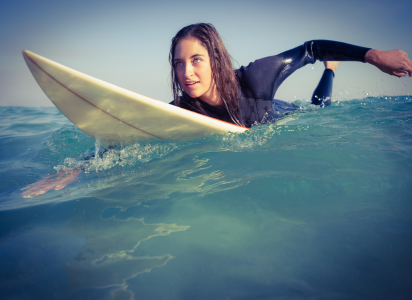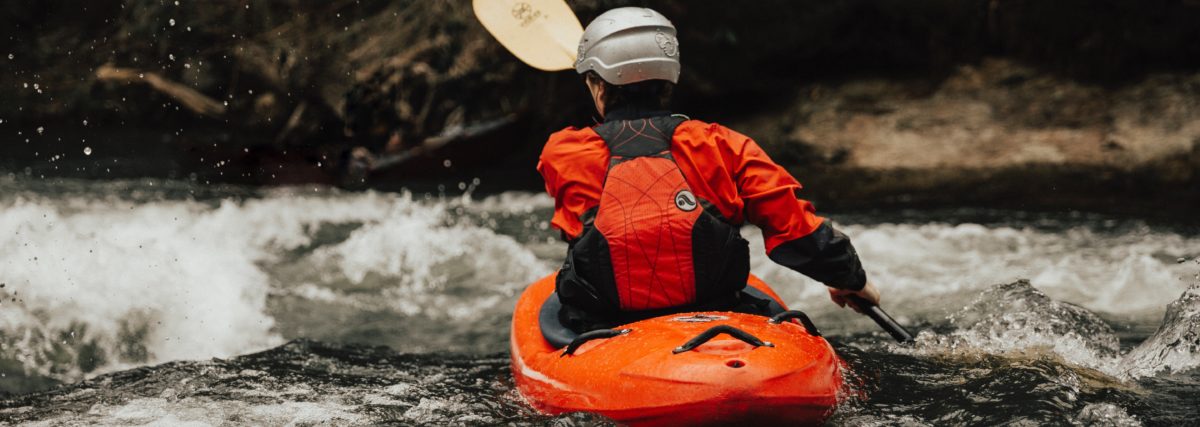If you’re new to kayaking or any water activities, you may encounter several challenges when it comes to gearing up.
One of the most common and critical decisions you’ll have to make is whether to wear a wetsuit or a drysuit. With countless options and conflicting opinions, it can be challenging to determine which of these will be better for your needs.
I’ve been a water baby for most of my life and wear both for different occasions. So, I’m sharing how wetsuits are different than drysuits and which one you’ll need for which water activity. Let’s *dive* in (pun intended!)
Wetsuits vs Drysuits: The Differences
First, let me explain what a wetsuit is vs a drysuit.
A wetsuit is made of neoprene and is designed to keep you comfortable and warm in cold water. Wetsuits are usually skin-tight and allow water to seep into the suit, creating a thin layer of warmth between the water and your skin.

On the other hand, a drysuit, is a waterproof suit that covers your entire body. It keeps you dry and warm by creating a seal that prevents water from getting in.
So whether to choose a wetsuit or drysuit will depend on the conditions you’ll be kayaking in.
When to Wear a Wetsuit
Wetsuits excel in excellent insulation properties.
You wouldn’t think so but they are perfect for kayaking in colder water or mild conditions because they help to regulate your body temperature.
If you’ll be in the water for an extended period, a wetsuit becomes an excellent option as it helps to prevent hypothermia. However, if you’re expecting to be in wet conditions for an extended period of time, a drysuit is the better option.
When to Wear a Drysuit

Drysuits excel in their waterproof properties. They are ideal for kayaking in frigid waters where you’re likely to get wet, submerged or exposed to water spray.
These babies are versatile in that they can be worn in very cold or moderately mild conditions. You have the option to layer up, which makes them a great overall choice in adverse weather conditions.
Drysuits are an ideal solution for extended or multiple-day trips where you’re likely to spend a lot of your time wet.
Pros and Cons of Wetsuits and Drysuits
Here are the pros and cons of each in bulletpoint lists:
Wetsuits
Pros
- Lightweight
- Form fitting
- Easy to move in
- Provides insulation and warmth
- Affordable
Cons
- Not waterproof
- Can become heavy when soaked with water
Drysuits
Pros
- Waterproof
- Extremely durable and long-lasting
- Provides insulation and warmth
- Increased mobility
Cons
- More expensive
- Heavier and bulkier than a wetsuit
At What Temperature Do I Need a Drysuit for Kayaking?

If you’re kayaking in temperatures below 45-54°F, you’ll likely need a drysuit for warmth and comfort.
At What Temperature Do I Need a Wetsuit for Kayaking?
For most people, the ideal temperature range to wear a wetsuit is between 50-68°F (10-20°C). This range allows for your body to stay comfortable and warm while also preventing overheating. If you are kayaking in waters above or below this range, you should opt for a drysuit.
Do You Still Get Cold in a Dry Suit?
Yes, it is possible to get cold in a drysuit.
While the suit does provide insulation and warmth, you may still experience some chilliness if you do not layer properly beneath your suit. It’s always important to make sure that you have the right layers for the waters you’ll be paddling in.
Do Wetsuits Keep You Dry or Just Warm?
Wetsuits work by trapping a thin layer of water between your skin and the suit.
This layer of water is then heated by your body temperature, providing insulation and warmth. While wetsuits can provide some protection from external moisture, they are not designed to keep you completely dry.
Do You Wear Anything Under a Drysuit?

Yes, you should always wear layers beneath your drysuit. The best way to stay comfortable and warm is to layer up with thermal clothing and other waterproof gear.
Doing this will provide the most insulation for your body and help keep you warm in cold waters.
Do Drysuits Restrict Your Movement Under Water?
No, drysuits do not restrict your movement. They provide a loose fit and are designed to allow the freedom of movement you need while kayaking in cold water or adverse conditions.
Do Wetsuits Restrict Your Movement Under Water?
Yes, wetsuits can restrict your movement. They are designed to fit snugly against your body and offer less flexibility compared to a drysuit.
But worry not: modern designs have allowed for more flexibility in the materials used for wetsuits, allowing for greater mobility when kayaking.
How Long Can You Survive in a Drysuit?
The amount of time you can safely stay in cold waters depends on the temperature and can vary from person to person. Typically, it’s recommended that if the water temperature is below 68°F (20°C), you should limit your exposure to 30 minutes or less.
Without a drysuit, in water temperature below 68 F, you would last as little as 15 minutes before developing hypothermia. With a drysuit, however, you can stay in cold waters for extended periods of time with appropriate layering and safety precautions.
Conclusion
As for your question, which one is better: a wetsuit or a drysuit? Welp, both have their unique strengths and weaknesses and the sole determining factor will be the type of kayaking you’ll be engaging in and the conditions you’ll be in.
Since I typically run cold even in the summer months, I usually opt for drysuits though I’ll occasionally wear a wetsuit on a super hot day. Goodluck and let us know what you ended up investing in.
